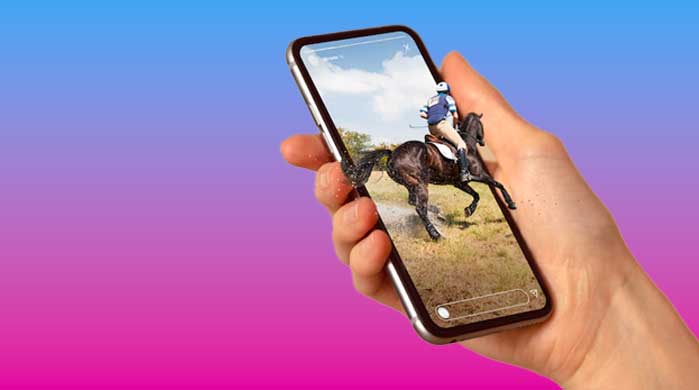Marketing is always evolving. As new technologies develop and consumers change the way they behave, businesses need to adapt their marketing strategies accordingly. So what are the latest trends in digital marketing? And where is it all heading? Here’s a look at 10 trends that are likely to dominate in 2023 and beyond.
1. Using short-form, vertical videos
In a world where attention spans are getting shorter and shorter, using short-form, vertical videos is a great way to capture your audience’s attention.

Short videos are great for businesses because they are easy to produce, and they capture the viewer’s attention quickly. They are perfect for social media platforms like Tik Tok, Instagram Reels and Youtube Shorts, where people are scrolling through their feeds quickly. All these platforms are heavily invested in this format and they have large audiences that can help you promote your business.
The disadvantages of short videos are that they can be difficult to produce well, with a short life span, and they may not be as effective at telling a story or promoting a product or service.
So keep in mind that’s important also to create some long-form video content to engage with your audience.
2. Cookie-less marketing and working with first-party data
With the passage of the General Data Protection Regulation (GDPR) in Europe, cookie-less marketing is becoming more and more common. This means that companies can no longer track users’ browsing habits without their consent. Instead, they need to work with first-party data (information that users provide willingly) to create targeted ads.
Cookie-less marketing is a term for marketing that does not rely on cookies to track user behaviour. It instead relies on first-party data, which is data that is collected by the company itself rather than by a third party. This data can be used to target ads and track conversions, among other things.

A few reasons why marketers should care about cookie-less marketing.
First, using first-party data allows you to target ads more accurately, as it is data that you have directly collected from your customers.
Second, using first-party data can help you to better track the effectiveness of your marketing campaigns, as you will have information on how customers interacted with your ads and what conversions resulted from them.
Third, using first-party data can help you to improve your customer retention rates, as you will have information on what products or services your customers are most interested in. Finally, using first-party data can help you to build a more detailed profile of your customers, which can be used to create more effective targeted ads.
There are several ways that you can get started with cookie-less marketing and working with first-party data for your business. One way is to collect data directly from your customers through surveys or questionnaires. You can also use tracking tools such as Google Analytics to collect information on how customers interact with your website. Finally, you can use social media platforms such as Facebook to collect information on the interests of your customers.
Using first-party data to understand your audience’s interests will help you to create better content and generate more value for your leads and customers.
3. AI content-writing tools
As artificial intelligence (AI) becomes more sophisticated, we can expect to see more AI content-writing tools being used in marketing campaigns. These tools can help businesses create high-quality content quickly and easily.
As businesses strive to create better content, artificial intelligence (AI) content-generated tools are becoming a more popular trend. Tools such as Jasper can help businesses to quickly and easily create high-quality content that is both effective and engaging.
Jasper is a platform that uses AI to help you create better email subjects, Ads headlines and social media captions. This can be a huge time-saver for businesses that need to produce content fast without writer’s block.
While these tools represent just a small sample of the AI content generation tools available, they provide a good overview of the benefits they can offer businesses.
By automating the process of creating quality content, these tools can help businesses to save time and money while still delivering great results.
4. Ethical marketing

As consumers become more aware of how their data is being used, they are also becoming more interested in ethical marketing practices. This means that businesses will need to be transparent about how they collect and use data, and they will need to make sure that their ads are truthful and accurate.
Ethical marketing is not only the right thing to do, but it’s also good for business. Consumers are more likely to do business with companies that they trust, and trust is built on transparency and honesty. Ethical marketing is the future of marketing, and businesses that don’t adapt are risking losing their brand’s reputation.
5. Marketing in the metaverse
VR and AR are two technologies that are slowly but surely gaining traction in the marketing world. These technologies can be used to create immersive, interactive experiences for consumers. And as VR and AR become more common, we can expect to see more businesses using them to promote their products and services.

With the evolution of virtual reality (VR) headsets like Oculus Rift and HTC Vive Pro and the investment of $10 billion from Facebook which rebranded to Meta last year, it’s evident that marketing in the metaverse is inevitable in the coming years.
With this promising new possibility, we can expect to see more brands using VR to create immersive experiences for their customers. This could include anything from product demos to full-blown advertisements and gamified experiences to deliver a better customer experience.
To address concerns of safety on transactions within the metaverse, with the rise of blockchain technology, we can expect to see more businesses using it to create transparent and secure advertising and marketing campaigns. Blockchain can be used to track data, ensure accuracy, and prevent fraud.
6. Micro and nano influencers

In recent years, we have seen a rise in the popularity of micro and nano influencers. These are individuals who have a relatively small but highly engaged following on social media.
Because they have such a loyal following, micro and nano influencers can be an effective way to reach your target audience when it comes to addressing a specific niche.
With the rise of micro and nano influencers brands have the possibility to test multiple audiences instantly and invest in creating genuine relationships transforming influencers into ambassadors.
7. Customer-centric & E-A-T-focused Marketing
As customers become savvier, businesses will need to focus more on customer experience (CX).

This means creating ads and content that are relevant and engaging without forgetting to provide excellent customer service.
Additionally, there’s another push from Google in relation to best practices, and businesses will need to make sure that their website meets Google’s guidelines for eCommerce websites (known as E-A-T).
E-A-T marketing is a term used in Google’s search quality guidelines. It stands for “Expertise, Authoritativeness, and Trustworthiness.” In order to rank well in Google, your website must have high E-A-T.
Google looks at a number of factors when assessing E-A-T, including:
- The quality of your content.
- The expertise of your authors.
- The trustworthiness of your website.
- The authority of your website.
Following these guidelines will rapidly become a common practice among businesses and brands that want to stay relevant in the future online landscape.
8. TikTok Marketing
TikTok offers brands a unique opportunity to reach a highly engaged and targeted audience. The app is most popular among Gen Z and Millenials, making it a great platform for promoting products and services.

TikTok’s focus on short videos makes it a particularly effective tool for engaging users and prompting them to take action.
Additionally, the app’s interactive features allow brands to create dynamic content that engages users on a deeper level with a high potential for virality. Overall, TikTok offers brands a versatile and powerful tool for reaching and engaging new young consumers.
9. Text to Image — creating graphics using AI
AI Text-to-image is a fascinating application of artificial intelligence that can generate images from scratch based on a text description. This technology has a wide range of potential applications, from helping artists create digital art to providing a new way for people to communicate.

Image created on Midjourney by Gabriel Alvarado
DALL.E or Midjourney are new AI tools that allow you to create graphics quickly and easily using only your text commands. This tool could be useful for businesses that want to create engaging visuals for testing idea concepts or even using them on their social media accounts or website.
Test your AI image generation creative skills with this free tool: Craiyon
And last but not least…
10. Search Engine Marketing:
SEM and SEO (Search Engine Optimisation) remain important, especially with the latest Google updates that reduce indexing of low-quality content making it harder for brands to show up on search results.
![]()
Another important aspect that needs to improve is the adoption of mobile-friendly websites and the observation of technical aspects that can impact site speed and user experience. Performing recurring SEO audits will become more necessary to make sure everything is working as it should from a technical standpoint.
Content is still relevant, so make sure to create relevant content including the use of multiple media formats such as text, images and videos to stay relevant and get results from your marketing campaigns.
These are just some of the marketing trends that will still be relevant in the near future. What do you think? Which of these trends is your business going to focus on? Are there any other trends we missed that you believe will take off in the next few years? Let me know in the comments.

Max is the founder of ZBRA Marketing, a leading digital marketing agency based in Dorset,UK. With over 15 years of experience driving growth through marketing strategy, SEO, PPC and CRO, Max has worked with major global companies across diverse sectors in South America and Europe.
He takes a data-driven approach to creating tailored solutions that transform brands’ online presence and success.
Through ZBRA, Max provides strategic consulting and services including SEO, PPC, CRO and data analytics to help companies connect with their target audiences and accelerate their digital growth.




